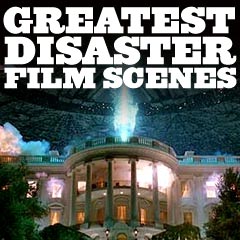
|

Typhoon (1940) This Technicolored adventure film was set on a remote island near Dutch Guinea in the tropics, and featured a climactic typhoon and tidal wave in its final minutes - preceded by an island vegetational fire. It was Paramount Studio's response to UA's popular film The Hurricane (1937) - see above, that also starred sarong-wearing Dorothy Lamour as its leading lady Dea (living a solitary life in a tree-top island hut for ten years), with a chimpanzee playmate Koko. She starred opposite Robert Preston as marooned, shipwrecked, pearl-seeking crew-member Johnny Potter. Director Louis King's movie was nominated for only one Academy Award: Best Special Effects, which it lost to The Thief of Baghdad (1940). |

|
||||||||||||||||||||||
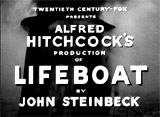
|
Lifeboat (1944) Alfred Hitchcock's suspense/thriller featured the survival efforts of nine passengers (including Tallulah Bankhead) of a torpedoed liner in a wrecked lifeboat. The film included the destruction of three ships -- the American oceanliner by a German U-boat (which itself was destroyed), and a Nazi German ship. It was nominated for three Academy Awards, Best Director, Best Cinematography, and Best Original Screenplay (John Steinbeck). |

|
|||||||||||||||||||||

|
Five (1951) Writer/producer/director Arch Oboler's apocalyptic, sci-fi drama opened under the credits with atomic-nuclear bombs destroying civilization. There was a lengthy montage of dark clouds engulfing various international landmarks, and headlines warned of WWIII annihilation ("Savant Warns Against New Bomb Use"). The low-budget independent film presaged future doomsday, end-of-world films such as The Day the World Ended (1955), On the Beach (1959), The World, The Flesh and the Devil (1959), Panic in Year Zero! (1962), The Last Man on Earth (1964, US/It.), Night of the Living Dead (1968), and had similarities to the group dynamics of Hitchcock's Lifeboat (1944). The tedious and slow-moving film (its subtitle "A Story About the Day After Tomorrow") was noted as cinema's very first post-apocalyptic nuclear war film, with haunting evidence of the nuclear extermination provided by skeletons (with shredded clothing) lying about. Five individuals (who miraculously survived) eventually came together at the country hillside house of the female character's aunt:
The stark black and white film was notable for being shot at Cliff House in the Santa Monica Mountains, a ranch owned by director Oboler and built by famed architect Frank Lloyd Wright. Charles and Michael began installing a generator to provide light, constructed a second house, and planted a corn crop and vegetable garden to be self-sustaining. The first to die was Mr. Barnstaple from radiation poisoning, soon after he requested one final view by the seaside. Due to squabbles over Michael's and Eric's romantic interest in Roseanne, Eric persuaded her to join him on a trip to the city of Los Angeles - to ostensibly find her husband. He lethally knifed Charles in the back before leaving in the jeep. Roseanne found her husband's skeleton in a hospital waiting room near the X-ray area. When she demanded to go back to the country where Michael had been abandoned, Eric refused -- but then he made the agonizing discovery that he had contracted terminal radioactive sickness (with lesions on his chest). She began the long trek back to the oceanside cliff house alone, only to find her baby dead along the way. The film ended on an optimistic note with Roseanne and Michael reunited in the country and ready to start mankind anew (with a second chance) as a symbolic Adam and Eve: ("Behold I make all things new" - quote from Revelation 21). |
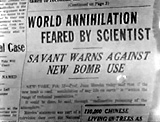 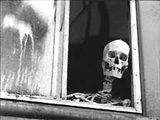 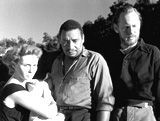 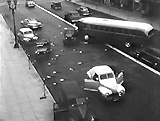 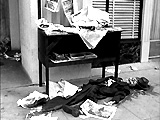 
|
|||||||||||||||||||||
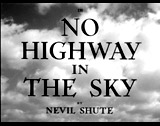
|
No Highway in the Sky (1951, UK) In this dramatic thriller based on Nevil Shute's novel, James Stewart starred as aeronautical engineer Theodore Honey who forecast that the plane he was flying in would crash - because of metal fatigue after 1440 hours, although the plane's captain was skeptical. The film dramatized how advancing technological and scientific knowledge could be used to predict disasters. |

|
|||||||||||||||||||||
 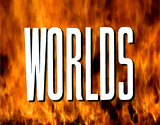 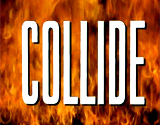
|
When Worlds Collide (1951) This sci-fi disaster film was based on the 1933 sci-fi novel by Philip Gordon Wylie and Edwin Balmer. Director Rudolph Mate's film was nominated for two Oscars (including Best Cinematography) and won the Academy Award for Best Visual Effects. [It was remade by Stephen Sommers in 2010.] Producer George Pal's Technicolored apocalyptic film, an influential film for future filmmakers, opened with a prologue quoting the Book of Genesis in the Bible - specifying God's punishment upon the corrupted people of Earth by destruction ("the end of all flesh"), and the saving of the faithful Noah with an Ark. It told about the imminent destruction of the Earth (in six to eight months in the future) by a rogue star named Bellus that was on a collision-course with the planet. [Note: Since the threatening object was a 'star' - then the title was inaccurate. It wasn't a "world" that was about to collide with Earth.] The film's scientist Dr. Cole Hendron (Larry Keating) had predicted an apocalypse - the first threat was Bellus' single orbiting satellite known as Zyra that would pass close to Earth, 19 days before Bellus would crash into the planet. To save the human race from extinction, there were desperate efforts to build a rocket-propelled space 'ark' to transport a group of men and women to Zyra, to escape the doomed Earth in the Noah's Ark-styled rocketship (with space for about 45 participants selected by lottery, plus stocked with food, medicine, microfilmed books, equipment, animals and livestock). It was built on a ramp by a billionaire, and designed to recolonize on the paradisical planet Zyra. As time ticked away and the 'day of doom' approached, Zyra as predicted came close to Earth (on Z-day) and caused the collapse of buildings and bridges, massive tidal waves, floods, tsunamis, earthquakes, worldwide fires and flooding, avalanches, and volcanic eruptions. Fires threatened to destroy the 'ark' spacecraft set to take off in a few weeks.
In the improbable happy ending, the spaceship launched with about 45 passengers off the curved ramp, as they watched Bellus crash into the Earth on a viewing screen. The 'ark' craft safely entered Zyra's atmosphere and landed with a gliding free-fall and belly-flop since the fuel had already been depleted. When the crew disembarked into a deep snow field, they found that Zyra was habitable with fresh air, and would be greener and more lush further away at lower elevations. The film ended with a view of the sunrise landscape on Zyra (a color sketch/drawing).
|
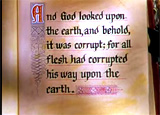 Opening Prologue 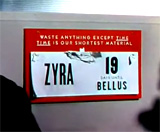 Z-Day  Ark Spaceship 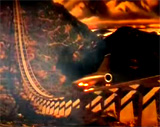 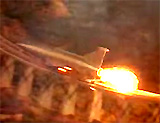 The Take-Off of the 'Ark' on Curved Ramp 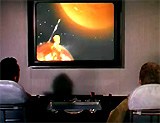 The Approach of Bellus, A Great Fireball on a Viewing Screen Inside 'Ark' 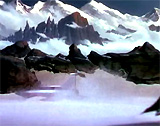 Landing on Snowy Icefield |
|||||||||||||||||||||
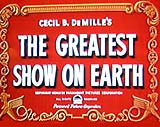
|
The Greatest Show on Earth (1952) Cecil B. De Mille's Best Picture winner featured a disastrous circus train wreck - one of the best aspects of this film, with a view of wild animals escaping from their damages cages. It had five Oscar nominations and two wins, including Best Story. |
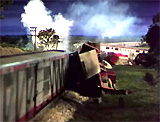 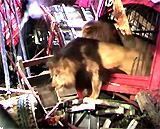
|
|||||||||||||||||||||
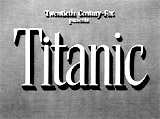
|
Titanic (1953) This 20th Century Fox film production featured an Oscar-winning screenplay by Charles Brackett, Walter Reisch, and Richard L. Breen, and a star-studded cast headed by Clifton Webb and Barbara Stanwyck. It had two Oscar nominations: Best Story and Screenplay (win) and Best Art Direction. It was one of the best renditions of the Titanic films and a model disaster film about the sinking of the ocean liner in 1912. It was most memorable for a recreated shot from the lifeboats watching as the ship (a 20 foot model boat) sank. [Note: An interesting footnote - Gentlemen Prefer Blondes (1953) was simultaneously being filmed on the same ship!] |
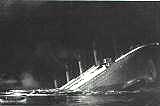
|
|||||||||||||||||||||
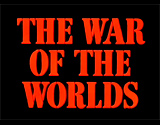 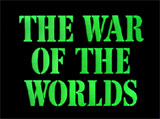
|
The War of the Worlds (1953) The classic and influential film adaptation of the H.G. Wells 1898 sci-fi classic (publicized by Orson Welles' infamous narrated radio play of 1938 that scared the world), it has been considered the definitive Martian alien-invasion film, with a vivid depiction of the invasion of the Earth by Martians. It was made by producer George Pal, director Byron Haskin, and Paramount Studios. It was the winner of the Academy Award for Best Visual Effects for its spectacular state-of-the-art visual F/X, with two other nominations (Best Film Editing and Best Sound).
The film was mostly set in early 1950s Southern California (Linda Rosa, about 30 miles from L.A., and then within the city itself). At first, a very large cylindrical-shaped, other-worldly object created a fireball and crashed. It caused a minor forest fire, carved out a small crater at the site of the impact, and brought many onlookers. It was evident that the object was radioactive. Believing it was some sort of unusual meteorite, some proposed making it a tourist attraction: ("Better than a lion farm or a snake pit. We won't have to feed it. Sure. We can sell tamales and enchiladas and hot dogs, too! Yeah! Ice cream, cold drinks, souvenirs. I think we should put up a few picnic tables"). Two nearby residents were intrigued, along with many others: Sylvia Van Buren (Ann Robinson) and her uncle, Pastor Matthew Collins (Lewis Martin). While investigating the crash, USC library science instructor Sylvia became the love-interest of heroic scientist Dr. Clayton Forrester (Gene Barry) of the Pacific Institute, who was interrupted by the crash during a fishing trip nearby, and was summoned to investigate. When the hatch on the strange radioactive object unscrewed itself and opened, a Martian weapon of some kind (a long-necked, cobra-like probe with a flashing red eye) emitted a deadly heat ray that scorched and disintegrated three men guarding the site, who were holding up a white flag. Soon after, three manta-ray looking, swan-like alien war-machines emerged at each crash or impact site. They were magnetically levitating at low-altitudes and using their cobra-like probes to attack ("It's supported from the ground by rays, probably some form of magnetic flux, like invisible legs"). Barrages of artillery and missile fire were ineffective and "useless" against the force-field protected Martian war machines, as Dr. Forrester explained: "Those shells can't get through to them. They've put out some sort of electromagnetic covering, a protective blister." The probes zapped objects with green disintegration heat rays throughout the Los Angeles area (and elsewhere in the world) to attempt to destroy the city. Their weapons were capable of burning, melting, and vaporizing weapons and soldiers.
When Sylvia and Dr. Forrester crash-landed in a military plane during an escape attempt, they sought refuge in an abandoned farmhouse. As they talked, Forrester presented a foreshadowing prediction: "If they're mortal, they must have mortal weaknesses. They'll be stopped... somehow." The farmhouse were soon surrounded and buried by a nearby crash-landing of several more alien cylinders. The two hid as three floating war-machines hovered nearby, and one of them sent out a long tentacled probe - a tri-colored "electronic eye," that peered in through a window ("Like a television camera. It's looking for us").
Sylvia caught a brief glimpse of one of the green-eyed, purple Martian aliens (a hideous crab-like biped) that had emerged from a war-machine and was exploring, presumably a Martian crewman. Then, she was spotted by the "electronic eye" probe - Forrester defended her by smashing it with an axe, and it withdrew its 'beheaded' tentacle. Then as they turned their backs and were removing debris blocking their exit, in a scary moment, the alien Martian placed its creepy, tentacled and fingered hand on Sylvia's left shoulder. Again, Forrester sprung into action - he blinded it with a flashlight, and it responded by trying to cover its tri-colored eye - and then he heaved his axe at it, and it fled with a scream. As they prepared to flee, Forrester grabbed the amputated eye-probe camera, and Sylvia's blood-splattered scarf, and noticed a vital Martian-blood sample; they made a run for it just before the house was incinerated by the heat-ray of a hovering war machine. It was clear that the Martians had created a nest to surround the major city of Los Angeles; military leaders felt that there was no other choice for them other than to drop a nuclear A-bomb in the LA area, 10 times stronger than anything previously used: (later, a Radio Reporter (Paul Frees) - the pre-titles Narrator dictated into a recorder: "This will decide the fate of civilization. Whether we live or die..."). However, the nuclear option was ineffective - one of the Martian flying machines with a force-field, seen in a binocular view, emerged unscathed from the mushroom cloud; Maj. General Mann (Les Tremayne) was dismayed: "It didn't stop them. Guns, tanks, bombs - they're like toys against them!" The war machines continued to zap objects with green disintegration rays to destroy 1950s Los Angeles. Soon after, Los Angelenos were evacuated as the Martians were proceeding to conquer and totally dominate the world; although the mass LA exodus began in an orderly fashion, and evacuees were led to welfare centers in the hills, mobs of people panicked as the evacuation continued.
In the conclusion, the aliens - attacking a church (where Forrester and Sylvia were reunited) - were decimated and forestalled only by simple, minute bacterial agents. One of the alien ships outside the church lost power and crashed into a neighboring building; Forrester watched as the saucer's door opened and one of the Martian creatures, with its outstretched weakened arm, tried to crawl from the door of its downed heat-ray machine; its arm flopped down as it stopped, turned gray, and expired; other attacking Martian flying ships began to collapse in the city and throughout the world, with dead aliens inside; Forrester noted: "We were all praying for a miracle" - and he looked heavenward as bells chimed. The Narrator intoned (in voice-over) that God had saved humanity "by the littlest things" --
|
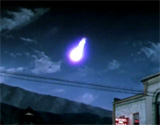 Fireball Object (A Flaming Meteor?) in the Sky  Red Hot Cylindrical Object on the Ground 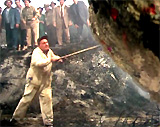 Crash Impact Site 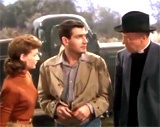 (l to r): Sylvia Van Buren (Ann Robinson), Dr. Forrester (Gene Barry), Pastor Collins (Lewis Martin) 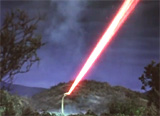 Deadly Heat Rays Emitted From Cobra-Like Probes 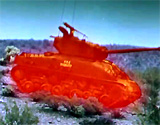 A Military War Tank Melted and Disintegrated by a Heat Ray 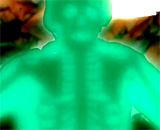 Soldier Vaporized by Deadly Heat Ray Weapon 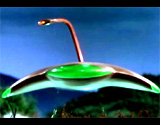 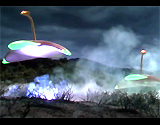 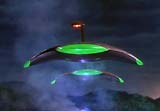 Floating Alien War-Machines Emerged From Crater Impact Sites  The Manta-Ray War Machines Were Protected by Force-Shields 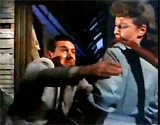 Dr. Forrester Defending Sylvia in Farmhouse  The Abandoned Farmhouse Incinerated 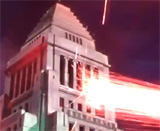 The Martians Attacking and Burning Down Los Angeles 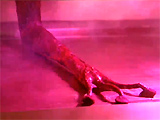 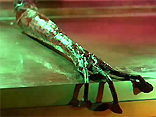 Assault on Los Angeles Suddenly Stopped - Death of Martian Creature 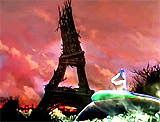 Attacks Worldwide (Such as at the Eiffel Tower) Ceased |
|||||||||||||||||||||
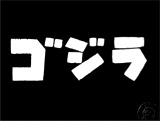
|
Godzilla (1954, Jp.) (aka Gojira) and the Japanese Monster Movies Japan's Toho Studios (and director Inoshiro Honda, known as "The Father of Godzilla") contributed to the "creature feature" output after noticing the influence of Ray Harryhausen's The Beast From 20,000 Fathoms (1953) with stop-motion animation. Unlike that movie, this and subsequent Japanese monster movies would feature actors in giant, rubber monster costumes, fake-looking miniatures, and double-exposure photography. The film would be released in the USA as Godzilla, King of the Monsters (1956) with 40 minutes excised from the film and 20 minutes of new footage, including Raymond Burr as an American reporter. The film launched a slew of Japanese monster movies with such giant atomic creatures as:
Two remakes of the original, Godzilla 1985 (1985) and Roland Emmerich's big budget Godzilla (1998) would flop miserably in the box office. |
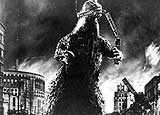
|
|||||||||||||||||||||
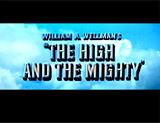
|
The High and the Mighty (1954) This drawn-out, Cinemascopic William Wellman adventure/disaster film and melodramatic character study, from Warner Bros., was adapted from pilot-turned-novelist Ernest K. Gann's 1953 novel. It was nominated for six Oscars (including Best Director and two Best Supporting Actress nods for Claire Trevor and Jan Sterling), with one win for Best Musical Score (Dimitri Tiomkin). Like Zero Hour! (1957), it was one of the earliest airplane-disaster films and served as the blueprint for 70's airplane-related disaster films, such as Airport (1970). It starred co-producer John Wayne as First Officer Dan Roman - a veteran commercial airline co-pilot (with a haunted past) assisting Captain John Sullivan (Robert Stack) aboard a San Francisco-bound flight on a DC-4 airliner from Honolulu. When the plane lost an engine and ran low on fuel at the point of no return, the passengers in the ensemble cast contemplated their lives and mortality. |

|
|||||||||||||||||||||
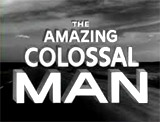 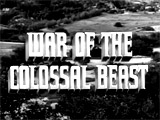
|
Films of Bert I. Gordon (1957-1977): With Giant Mutated Monsters and Giant People The famed schlockmeister B-director Bert Gordon (nicknamed Mr. Big, whose initials were B.I.G.) specialized in cheesy "giant mutated monster and giant people" films (often with disaster film elements) enhanced with cheap special effects. The most famous was The Amazing Colossal Man (1957), about Army Lt. Colonel Glenn Manning (Glenn Logan), who in a futile attempt to save a downed pilot, was blasted by a plutonium bomb, and grew to the height of 50 feet as a bald giant and then rampaged through Las Vegas, where he fell off Hoover/Boulder Dam to his apparent death. [Note: It was followed by an inferior sequel War of the Colossal Beast (1958), notable only as a B/W film with a color finale when the Beast was electrocuted.] Most of Gordon's films were lampooned by Mystery Science Theater 3000. Other notable Gordon films included:
|
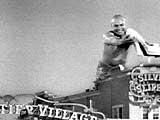 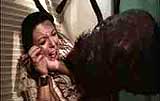
|
|||||||||||||||||||||
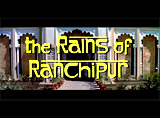
|
The Rains of Ranchipur (1955) 20th Century Fox's dramatic CinemaScope film from director Jean Negulesco was a semi-remake of the B/W The Rains Came (1939) (starring Tyrone Power and Myrna Loy), that received only one nomination - for Best Special Effects. The main natural (not emotional) disasters in this film were an earthquake and a flood. Filmed on location in Pakistan, it starred Richard Burton (as Hindu physician Dr. Rama Safti), Michael Rennie and Lana Turner (as British aristocrat Lord Esketh and his wife Lady Edwina Esketh), and Fred MacMurray (as alcoholic Tom Ransome, Edwina's ex-lover). |

|
|||||||||||||||||||||

|
This perennial big-budget favorite, a VistaVision Technicolored epic, was a remake of director Cecil B. DeMille's own 1923 B/W silent film of the same name. It received seven Academy Award nominations, with one win for Best Special Effects. The film was notably remade twice: The Prince of Egypt (1998) (animated) and director Ridley Scott's Exodus: Gods and Kings (2014). It starred Charlton Heston as the Biblical character of Moses, who delivered the Hebrews from slavery in Egypt (under Yul Brynner as Rameses) and led them in a massive Exodus to Mt. Sinai. There, he received the Ten Commandments, imprinted by God on a stone tablet, to the people - in a fantastic special effects sequence. Only four of ten plagues (in order) were fully visualized (the ones in bold) in the film:
The successful historical epic had many special effects of natural disasters or other events:
|
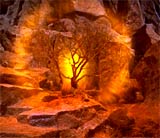 Moses Confronted by Burning Bush 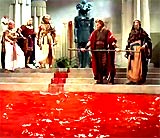 Water Turned to Blood 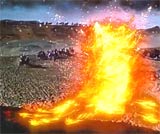 Pillar of Fire At the Red Sea 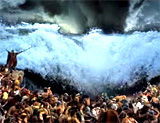 The Parting of Red Sea |
|||||||||||||||||||||
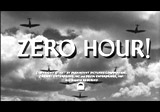
|
Zero Hour! (1957) This relatively obscure and dramatic disaster film from Paramount Pictures would become famous as one of the first of the in-flight disaster films that would soon follow in the decade of the 70s. The author of this film's derivative teleplay, Arthur Hailey, would later write the novel and screenplay for Airport (1970). This film was also the basis for the classic gagfest spoof Airplane! (1980), and provided many of the cliches for future films. In this routine, melodramatic air disaster film, the two pilots of a commercial Canadian passenger plane became incapacitated, with half of the crew, due to contaminated food (tainted fish). Shell-shocked ex-RAF pilot in WWII, Ted Stryker (Dana Andrews), was the only passenger with previous flight experience, who happened to be on board when he followed estranged wife Ellen (Linda Darnell) and son Joey (Raymond Ferrell) onto the plane as they were departing to start a new life in Vancouver. |

|
|||||||||||||||||||||
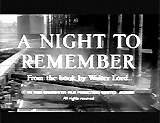
|
A Night to Remember (1958, UK) Before James Cameron's Titanic (1997), this was considered the biggest and best of the Titanic films in terms of acting, writing, visual effects and stuntwork. An almost semi-documentary work, it was adapted by Eric Ambler from the best-selling book by Walter Lord, and told the story of the vessel's launch and then sinking on the fateful night of April 14, 1912. In the film's climactic ending, the RMS Titanic oceanliner hit an iceberg ("Iceberg dead ahead, sir") and sliced a hole in the ship, causing it to sink fairly rapidly. The sequence of striking the iceberg and the sinking was re-created with careful accuracy and filmed close to "real time." As the ship slowly went under, lifeboats were deployed and women and children (in first and second class) boarded them. The ship began to list as it took on more water, and passengers became frantic, while some were resigned to their inevitable fate - in the first-class smoking room, a steward paused to ask the resolute, stone-faced ship's designer Thomas Andrews: "Aren't you going to try for it, Mr. Andrews?", but he received no reply. During the ship's final plunge of the front section of the ship into the deep water, passengers jumped into the sea as the stern rose high into the air, and many of those in the water suffered an icy death.
The final scene took place on the deck of the Carpathia that had rescued the survivors from the water or from lifeboats; according to the latest count, 1,500 people were lost; while 705 survived; the wireless operator (Alec McCowen) brought Captain Arthur Rostron (Anthony Bushell) a transmitted message received from the nearby Californian (that earlier could have saved the Titanic), asking if they could help; the Captain responded with the film's final spoken dialogue: "Tell them no, nothing. Everything that was humanly possible has been done." A scrolling epilogue postcript appeared above a tracking shot of the surface of the ocean, strewn with floating lifejackets, furniture (deck chairs, tables, etc.), a musical instrument, the playroom's rocking horse, and other discarded items:
|
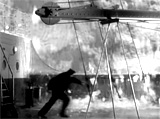 Collision With Massive Iceberg 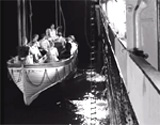 Lowered Lifeboat 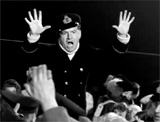 Chaos On-Board 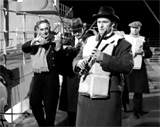 Orchestral Members Playing On Deck 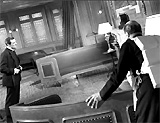 Ship's Designer in Smoking Room Asked By Steward: "Aren't you going to try for it, Mr. Andrews?" 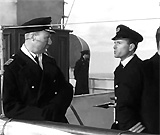 Carpathian Captain: "Everything that was humanly possible has been done" |
|||||||||||||||||||||
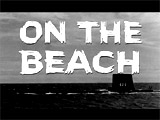
|
On the Beach (1959) Producer/director Stanley Kramer's bleak black and white melodramatic film, based on Nevil Shute's 1957 novel, proposed nuclear annihilation in a post-apocalyptic world (the aftermath of World War III). This talky Cold War-era doomsday film dramatized the realities of that post-nuclear world, with survivors waiting for their radioactive doom within five months in Australia, the last refuge on Earth in 1964. The crew of the last US nuclear submarine (the USS Sawfish) took a reconnaissance mission to San Diego, CA in search of the source of a Morse Code radio signal - despairingly finding that a Coke bottle was caught in a window shade being blown by the wind against a radio transmitter key. Its major stars were Gregory Peck (as submarine Captain Dwight Towers), Ava Gardner (as the Captain's alcoholic Australian love interest Moira Davidson), Anthony Perkins (as Australian naval officer Lt. Peter Holmes), and Fred Astaire (in a rare dramatic role as Australian scientist and race driver Julian Osborn). |
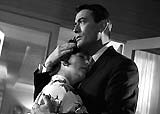
|
|||||||||||||||||||||